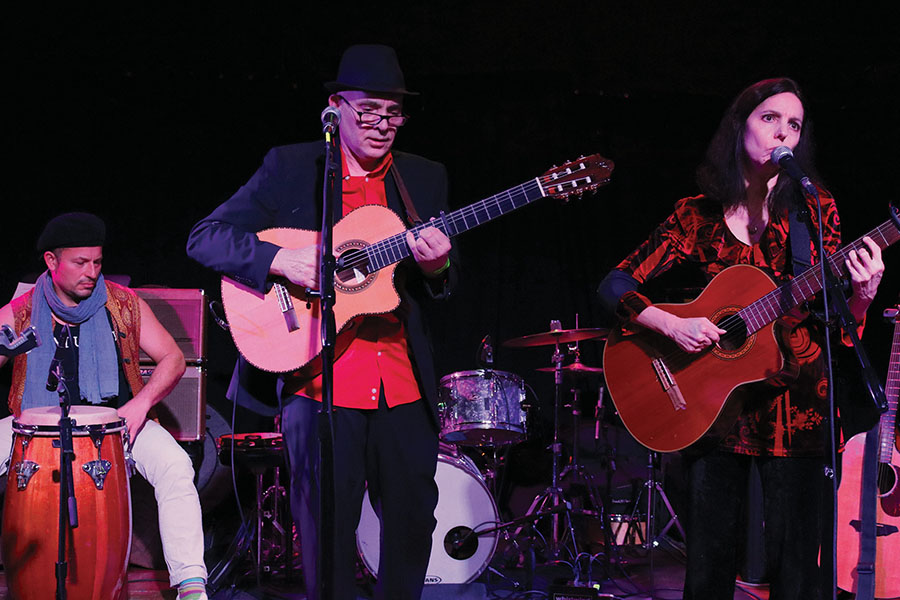Madison has developed its own ‘Carnaval’ traditions
Dave Irwin and Helen Avakian perform at the High Noon Saloon on Feb. 22
March 4, 2020
“Carnaval” is an annual event that occurs in several cities all over the world. Carnaval celebrations include parades, elaborate costumes, song and dance. Madison, Wis. has developed its own annual Carnaval tradition.
The first round of Madison Carnaval, which featured performances from Handphibians, Forro fo Sho, Grupo Balança, Samba Novistas, Drum Power, Capoeira Martial Arts, and Dave Irwin and Helen Avakian, took place at the High Noon Saloon on Feb. 22.
The second finale round of the Madison Carnaval celebration took place at the Majestic Theater on Feb. 29. The double weekend celebration has been in Madison for two decades now; this year marks the 22nd annual Madison Carnaval.
To start the Madison Carnaval finale, the group Panchromatic Steel took the stage. Their set consisted of an array of instruments, such as the steel pan, the bongos, snare drums, a saxophone, and a bass guitar. Panchromatic Steel covered songs like “One Dance” by Drake, “Hips Don’t Lie” by Shakira, “Somebody That I Used to Know” by Gotye and “Dynamite” by Taio Cruz.
Drum Power followed Panchromatic Steel, a youth group aged nine to 17 that performed Afro-inspired drumming and dance routines. Yorel Lashley, Drum Power instructor and founder, introduced the youth group to the stage and played along with them.
After Drum Power, Ótimo Dance took the stage. Their costumes, complete with sequins and feather headsets, were extraordinary. The ladies in Ótimo Dance really outdid themselves. Their Samba dance routine was accompanied by the Brazilian percussion group, The Handphibians. The Handphibians’ performance featured Samba music and drumbeats.
Near the end of the night, the group Golpe Tierra played a mixture of laid-back, jazz-oriented Latin jams. The ensemble played electric guitar, acoustic guitar and the saxophone. They also used an animal’s jawbone as a güiro-like instrument.































